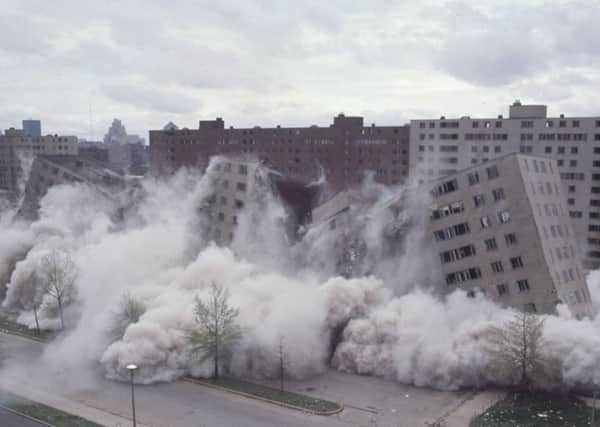Book review: Fallen Glory by James Crawford


Fallen Glory by James Crawford | Old Street Publishing, £25
There is an Anglo-Saxon poem in the Exeter Book usually called “The Ruin”, which, ironically, is in fragments itself. The speaker, as far as we can tell, is looking at the vestiges of Roman architecture, and muses, “Wonderful is this wall-stead, wasted by fate; battlements broken, giant’s work battered”.
It would be the perfect epigraph to James Crawford’s delightful and often intriguing book about the lives and deaths of 20 buildings, from the Tower of Babel and the Palace of Knossos to the Twin Towers and, wittily and provocatively, GeoCities.
Advertisement
Hide AdEach building and city with which it is associated is a keyhole into a panorama of the times, with some assured and enlightening essayistic notes on their continuing meanings and what they tell us about history. This necessitates a lot of backstory and filling in – I doubt many readers can come to such a work preloaded with knowledge of Assyrian history, Byzantine politics, the French Revolution and the Opium Wars. In one sense, the book works very well indeed. Were I to give a book to a young person about to study any of the Humanities at university, this would be my choice for a succinct and smart overview of crucial points in human history. The downside is that each ruin is often subsumed by its context; one loses sight of the cathedral because it is being held in by flying buttresses of massive dimensions.
But when it is good, it is very, very good. Some of the background might have benefited from an editorial whittle or two, and a stronger proof-read might have removed a few errors: in my fields of obsession, I’d point out that De Rerum Natura is not by Epicurus, but by his poetic adherent Lucretius, and that calling Inigo Jones the Earl of Arundel’s “young friend and protégé, the carpenter who became England’s first architect” is wide of the mark given Jones was 40 when they travelled together and was already the court’s most successful stage designer. It’s at times like this that I bless the invention of the paperback version, where such crinkles can be ironed out.
The chapter on the Twin Towers is one of the best such pieces I have read, and to learn first that the architect was the very same Minoru Yamasaki whom we had been reading about a few chapters earlier, as the designer behind a Modernist slum that made the Red Road Flats look like the Hanging Gardens of Babylon, was startling. That Mohammad Atta, the 9/11 pilot, trained as an architect and wrote about the mismatch between traditional Islamic city construction and the skyscraper gave me goose pimples. That Yamasaki’s collaborator purportedly said, at the opening of the Twin Towers, that from the top you can look down on the planes leaving Newark Airport, or that Yamasaki himself referred to the plaza as a “Mecca”, made me think that the future horror was written into that building’s aesthetic foundations.
The subsequent chapter, on GeoCities, is wry and sensitively done: what if the web tried to be like a planned city? The answer is stark. The residents would move out and the developers move in. A longer essay by Crawford on, say, Patrick Geddes vs the internet would be something I’d read in a trice. The piece on Yamasaki’s prior endeavour, the Pruitt-Igoe estate in St Louis, manages to avoid the ruin-porn that so often is associated with descriptions of rust-belt dilapidation (he begins with the fons et origo of this trope, the film Koyaanisqatsi), and very subtly dissects the way in which it has become a shibboleth of anti-Modernist architects. Without sentimentality, Crawford captures one of the ambiguities that make writing about architecture so interesting. The architect is head bricklayer, or God; Yamasaki was a God working without the budget he expected or the materials he required.
The analysis can be quite touching at times. One can puritanically sniff at what Sir Arthur Evans did at Knossos – basically, make up a Disney version of what was actually there – or realise that his aspiration to make his version of the cradle of European civilization about goodness and art and pleasure, as war convulsed Europe, was noble and pitiable, reactionary and revolutionary.
The collision of aesthetic vision with political reality is why books like Owen Hatherley’s Landscapes of Communism or Jacqueline Yallop’s Dreamstreets are among the more exciting trends in creative non-fiction at the moment. Crawford effortlessly joins their ranks.
Advertisement
Hide AdFallen Glory is a consistently interesting meditation on “sic transit gloria mundi”. It shows how we make buildings, then buildings make us, then the memories of buildings make us build differently. n